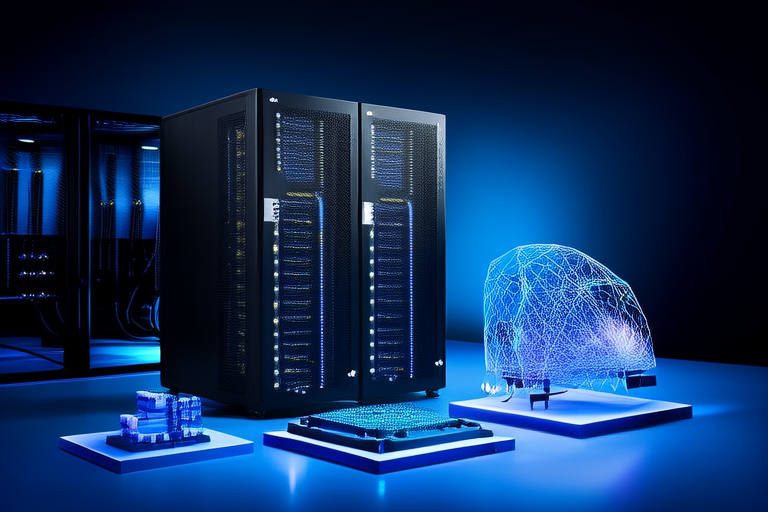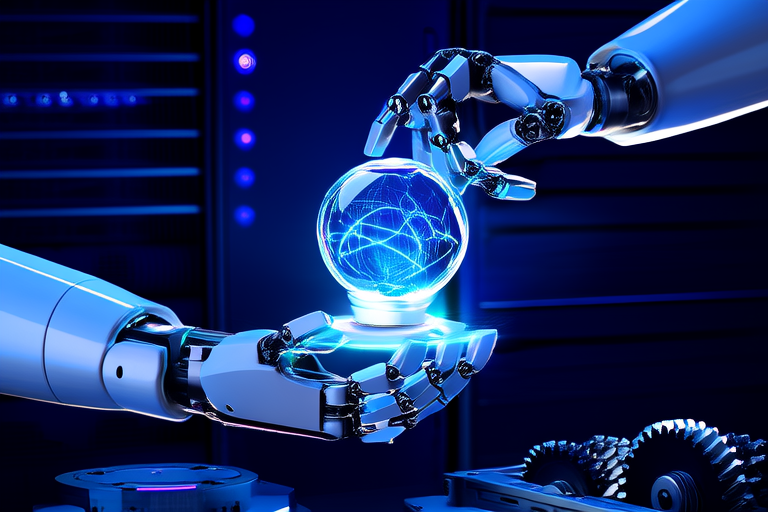The Intersection of Machine Learning and Artificial Intelligence
Introduction
Artificial Intelligence (AI) and Machine Learning (ML) are often used interchangeably, but they represent distinct, albeit interconnected, domains within the broader field of computer science. AI refers to the simulation of human intelligence in machines that are programmed to think, learn, and perform tasks that typically require human intelligence. This includes problem-solving, decision-making, language understanding, and pattern recognition. On the other hand, ML is a subset of AI that focuses on the development of algorithms and statistical models that enable computers to improve their performance on a task through experience without being explicitly programmed.
The distinction lies in the approach: AI aims to create systems that can perform intelligent tasks, while ML provides the tools and methodologies for those systems to learn from data. Understanding the intersection between these two fields is crucial because it enables the creation of more sophisticated, adaptive, and autonomous systems capable of handling complex, real-world problems.
Historical Context
The evolution of AI and ML has been marked by significant milestones and influential figures. Early AI research in the mid-20th century focused on rule-based systems and symbolic approaches, where experts manually encoded knowledge into the system. Key milestones include Alan Turing’s conceptualization of the Turing Test in 1950, which proposed a method to evaluate a machine’s ability to exhibit intelligent behavior equivalent to, or indistinguishable from, that of a human.
Meanwhile, ML emerged as a subfield of AI in the late 1950s with the introduction of perceptrons, the first neural networks. However, it wasn’t until the advent of big data, powerful computing resources, and advanced algorithms in the 21st century that ML truly began to flourish. Figures like Geoffrey Hinton, Yann LeCun, and Yoshua Bengio played pivotal roles in advancing deep learning, a subset of ML that has revolutionized image and speech recognition.
The convergence of AI and ML has been driven by the increasing availability of large datasets and computational power, leading to breakthroughs in areas such as natural language processing, autonomous vehicles, and personalized medicine.
Core Concepts
In AI, core concepts include rule-based systems, knowledge representation, and reasoning. Rule-based systems use predefined rules to make decisions, while knowledge representation involves encoding information in a way that machines can understand and reason about. Reasoning, in turn, is the process by which machines draw conclusions based on available information.
Machine learning encompasses several core principles, including supervised, unsupervised, and reinforcement learning. Supervised learning involves training models on labeled datasets, where the algorithm learns to map inputs to outputs. Unsupervised learning, conversely, deals with unlabeled data, aiming to discover hidden patterns or structures. Reinforcement learning focuses on training agents to make a sequence of decisions by rewarding positive outcomes and penalizing negative ones.
The overlap between AI and ML is evident in the way these concepts complement each other. For instance, AI systems often rely on ML algorithms to improve their performance over time, while ML techniques can benefit from AI-inspired methods for knowledge representation and reasoning.
Applications and Use Cases
The integration of ML techniques into AI systems has led to numerous real-world applications across various industries. In healthcare, AI-driven ML models assist in diagnosing diseases, predicting patient outcomes, and personalizing treatment plans. For example, IBM Watson Health uses ML to analyze medical records and provide evidence-based recommendations to clinicians.
In finance, AI-powered ML algorithms are employed for fraud detection, risk assessment, and algorithmic trading. Companies like JPMorgan Chase leverage ML to automate the analysis of legal documents and detect anomalies in financial transactions.
The automotive industry has seen significant advancements with the development of autonomous vehicles, which rely on AI and ML for perception, navigation, and decision-making. Tesla, for instance, uses ML to continuously improve its self-driving capabilities through over-the-air updates.
In entertainment, AI and ML are transforming content recommendation systems, virtual assistants, and interactive gaming experiences. Netflix employs ML algorithms to suggest personalized movie and TV show recommendations to users based on their viewing history.
These applications exemplify the synergy between AI and ML, demonstrating how the combination of intelligent decision-making and adaptive learning can drive innovation and efficiency.
Challenges and Ethical Considerations
Despite the promising advancements, integrating AI and ML comes with several challenges. Data quality issues, such as noise, bias, and inconsistency, can significantly impact the performance and reliability of ML models. Ensuring model interpretability—understanding how and why a model makes certain predictions—is another critical concern, especially in high-stakes domains like healthcare and finance.
Scalability poses another challenge, particularly when dealing with large-scale datasets and complex models. As systems grow in complexity, maintaining efficiency and performance becomes increasingly difficult. Additionally, ethical concerns surrounding AI and ML include bias in algorithms, privacy violations, and job displacement due to automation.
Addressing these challenges requires a multidisciplinary approach, involving collaboration between technologists, ethicists, policymakers, and domain experts. Ensuring fairness, transparency, and accountability in AI and ML systems is essential for building trust and promoting responsible innovation.
Future Prospects
The future of AI and ML holds exciting prospects, with trends like explainable AI, federated learning, and hybrid models driving further advancements. Explainable AI aims to make ML models more transparent and interpretable, enabling users to understand and trust the decisions made by these systems. Federated learning allows models to be trained across multiple decentralized devices or servers holding local data samples, preserving privacy and reducing data transfer costs.
Hybrid models that combine traditional AI techniques with ML approaches are expected to enhance the capabilities of AI systems, making them more robust and adaptable. These advancements could have profound impacts on society, economy, and everyday life, potentially transforming industries and improving quality of life.
However, realizing these benefits will require addressing ethical considerations and ensuring equitable access to AI and ML technologies. The responsible development and deployment of AI and ML systems are crucial for fostering a sustainable and inclusive future.
Conclusion
The intersection of AI and ML represents a dynamic and rapidly evolving field with immense potential. By leveraging the strengths of both disciplines, we can create intelligent, adaptive, and autonomous systems capable of solving complex, real-world problems. Understanding the synergies between AI and ML is essential for continued innovation and progress, ensuring that these technologies are developed and deployed responsibly.
As we move forward, it is important to remain mindful of the challenges and ethical considerations associated with AI and ML. By fostering collaboration across disciplines and prioritizing fairness, transparency, and accountability, we can harness the full potential of these technologies to benefit society at large.




